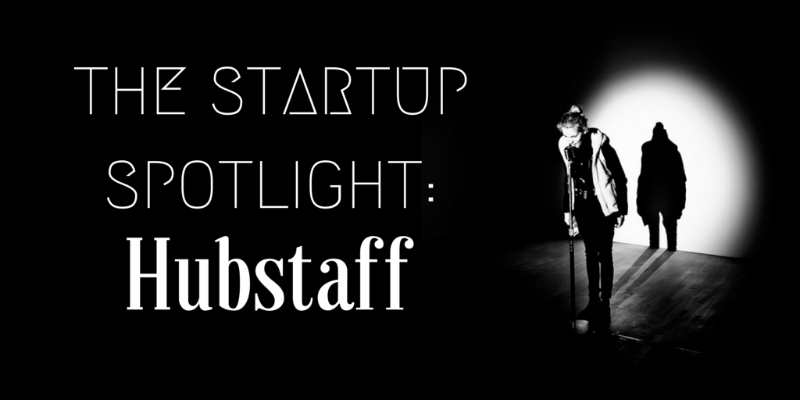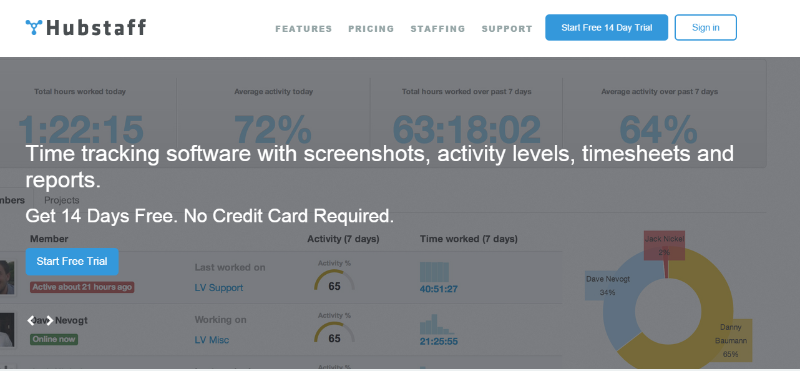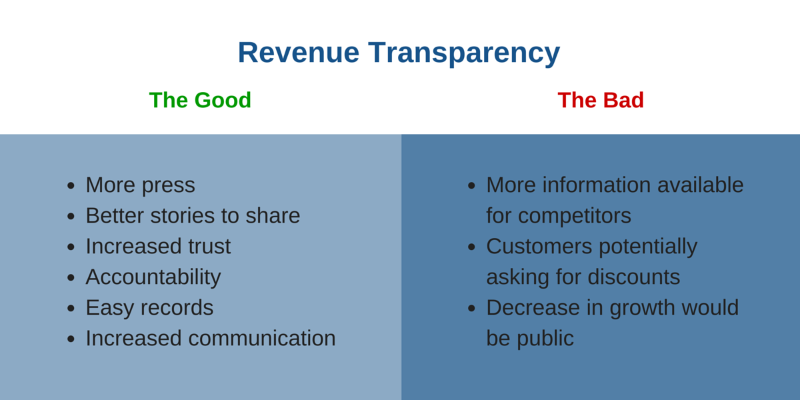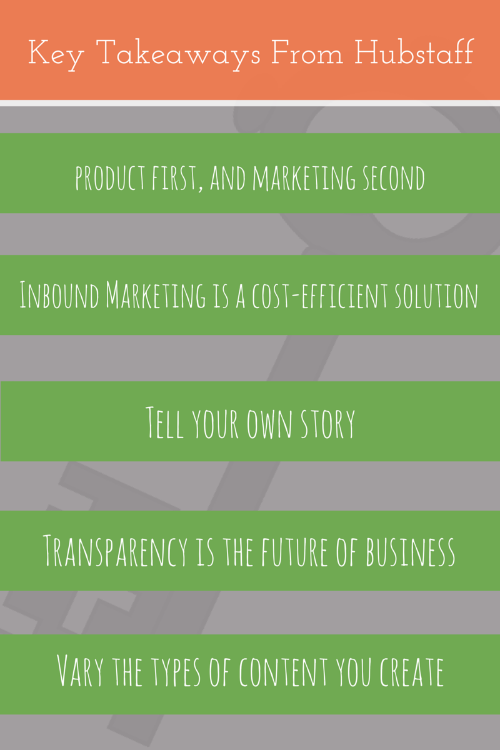Welcome to Spokal’s Startup Spotlight Series – A series that features brilliant startups from all around the world and takes an inside look at the wins, the loses, the ups and downs, the struggles and the successes of what it takes to be part of a startup.
This week we have Co-founder Dave Nevogt talking to us about his startup, Hubstaff!
A Little Bit About Hubstaff
Hubstaff is a time tracking software for remote teams and freelancers that was founded by Dave and his partner Jared Brown in 2012.
As a serial entrepreneur, Dave worked with remote employees all the time but needed to find a way to be able to track their activity more efficiently.
After years of searching for the right software, Dave realized that this was a real pain point in the market and set out to find a developer that could help him make this software come to reality. After finding Jared on Linkedin, the 2 got to work creating their new company and eventually released Hubstaff out into the wild.
Hubstaff has caught the attention of many marketers and businesses alike because they’ve done something that very few startups have the nerve to do – make their growth metrics public. Hubstaff’s commitment to transparency is also evident through the dedicated portion of their blog – How We Grow – which Dave keeps updated with information on Hubstaff’s growth.
Hubstaff is one of those businesses that really stands out from the crowd because of this unusual strategy. They’re different, their honesty is refreshing, they’re bold, they’ve taken risks… it’s all signs of a company that’s dedicated to marketing their business and getting in front of their competitors.
But, interestingly enough, marketing isn’t Hubstaff’s priority – The product is. As Dave says:
“I think this marketing first-attitude can still succeed in some industries, and back in 2003 it may have applied to all industries. But now it’s 2014, and I think the rules have changed drastically (especially in software).”
Hubstaff & Inbound Marketing
But in saying that, marketing is obviously also a huge part of what makes Hubstaff successful. Without great marketing, there can be no great product. And to achieve this great marketing, Hubstaff have decided to go down the inbound marketing route.
What made you go down the inbound marketing route? Do you do much outbound?
“The numbers for outbound sales don’t really work for us because we only charge $5 per user and the average customer size is $29 / month. So in terms of outbound it’s really hard to make that math work. Inbound, we have a totally hands off approach. We don’t have to call leads, etc… They just go through our signup (free trial) process and select a plan.”
But to make their inbound marketing actually work, Hubstaff needed to figure out a way to stand out from the crowd. To do this, they had to figure out what they could offer that no one else could, and that was content that focused on their own unique journey as a startup.
How do you decide what content to create?
“At this point the way we choose [content] is to just write about the biggest wins and losses in our business (how we grow). We also write about the tools we use and management issues. But in general, we write about the items that are the biggest impact in our business. We are really trying to document what’s happening inside our business.”
Apart from documenting what goes on behind the scenes at Hubstaff, it’s clear that Hubstaff’s content is created with their target audience in mind: People who manage teams remotely and remote workers. With more and more startups taking on the remote approach, their audience is ever expanding and Hubstaff makes sure that they dominate the market by creating content that specifically addresses this market.
Some examples of their target audience-focused content are:
- Common Remote Team Management Issues and How to Solve Them
- No Excuses: The Definitive Guide to Remote Team Management
- Managing a Remote Team in 5 Simple Steps
With a rigorous schedule of three posts a week, ranging from 1,000 words to 3 – 4,000 words that take around 5-6 hours to create, and some great content being posted on their blog, it’s clear that Hubstaff are off to a great start.
What kind of content has performed the best for you?
“Specific reviews of software has worked well because a lot of people can learn how we use it in our specific use case.”
Some examples of software reviews that they’ve covered are:
- Zendesk Time Tracking: Track Time Spent Solving Tickets
- Basecamp Time Tracking: Record Time Spent on To-Do Lists
- Asana Time Tracking: Automatically Record Your Time
This is a great strategy for targeting these software users, but it also allows people who are unfamiliar with Hubstaff to get an idea of how it’s supposed to work.
Moreover, Dave says that “long form content has worked well (ebooks, etc…) and also list type content where we take the top 10 of something… We’ve done well piggy backing off of other brands”.
But, like any good startup founder, Dave is aware that there’s always room for improvement.
What are some areas of your content marketing strategy would you like to improve?
More image rich posts, and potentially video recycling where we make a video out of our most popular blog posts. Right now we have a pretty good process where we work with several writers / editors on each post so each person is kind of contributing their own specialty. Raw content, images, titles, SEO, etc.
While Hubstaff have managed to create an efficient content creation process, they’re not just keeping it to themselves! They’re also sharing their services by providing content marketing services to their customers.
What made you offer content marketing services to Hubstaff?
Just the overall need in the marketplace. It has not done great so far, but basically we’ve got the whole process of creating content built in a scalable fashion. And we’ve seen big results from consistent blogging and so it seemed like an easy product to offer our customers as well, and since most of them are small businesses, it seemed to be a good fit.
Hubstaff & Transparency
Like I said above, one of the most notable things about Hubstaff that makes them stand out from the crowd is their commitment to transparency. You can see all of their revenue metrics through Baremetrics and they keep people up to date with what they’ve been up to through their blog.
So it comes as no surprise that Buffer, a company who has shown their devotion to transparency by publicizing their employees’ salaries, is an inspiration to them.
But transparency wasn’t always an easy decision for them in the beginning, with Dave and Jared going back and forth for weeks before making the decision to go ahead with it. In their blog, they broke down what they thought were the pros and cons of going transparent, which you can see here:
Interestingly, Hubstaff itself is supposed to make remote employees’ daily progress with tasks and projects more transparent to their managers and it does this by taking screen grabs and providing easy to access data on the employees activity. This made me curious whether or not there were any issues around privacy with regards to Hubstaff, but Dave quickly assured me to the contrary:
Not really, because it’s really built for an employer / employee / contractor relationship. The majority of our users do not really look at the screenshots and it’s not something managers are going through the screenshots and really trying to get into someone else’s business.
Here’s an example. I find myself thinking lots of times (as a manager) what employee X is working on today. They’ve got 5 things to do on this week’s sprint for work, and 2 of them have been done and it’s Thursday. So I am wondering which items are being done now and what the progress is. Instead of going into skype or email and requiring an update, I just login and I can tell in 10-15 seconds the work being done and the progress that’s being made. Faster and easier for everyone. There’s also the ability to delete out screens if something ever does come up that you don’t want your employer seeing. But as I said above, if the instance is rare, it’s not going to be a problem because most of the managers are not looking at the screens 1 by 1, they are instead, using this as a tool for faster collaboration.
For example, below you can see the work that an employee did from 11 – 12. As you can see, the screen grabs are there to illustrate the progress of the project, but it’s a high level overview of the work that gives managers a sense of the progress of what’s that’s being done.
To learn more about Hubstaff, head over to their website and say hello to Dave and Jared!
Key Takeaways From Hubstaff
- Your product should come first, and marketing second
- Inbound Marketing is a cost-efficient solution
- Tell your own story
- Transparency is the future of business
- Vary the types of content you create
Want to read the more from The Startup Spotlight Series? Check out the other interviews we’ve done:
Liked this?
 Well, we've plenty more where that came from! Subscribe to our newsletter to get great tips, tricks and information on all things inbound marketing!
Well, we've plenty more where that came from! Subscribe to our newsletter to get great tips, tricks and information on all things inbound marketing!
If you’d like your business featured in our startup spotlight series, please send me an email at [Sarah at getspokal dot com] with the subject line “Inquiry About Startup Spotlight Series”.





